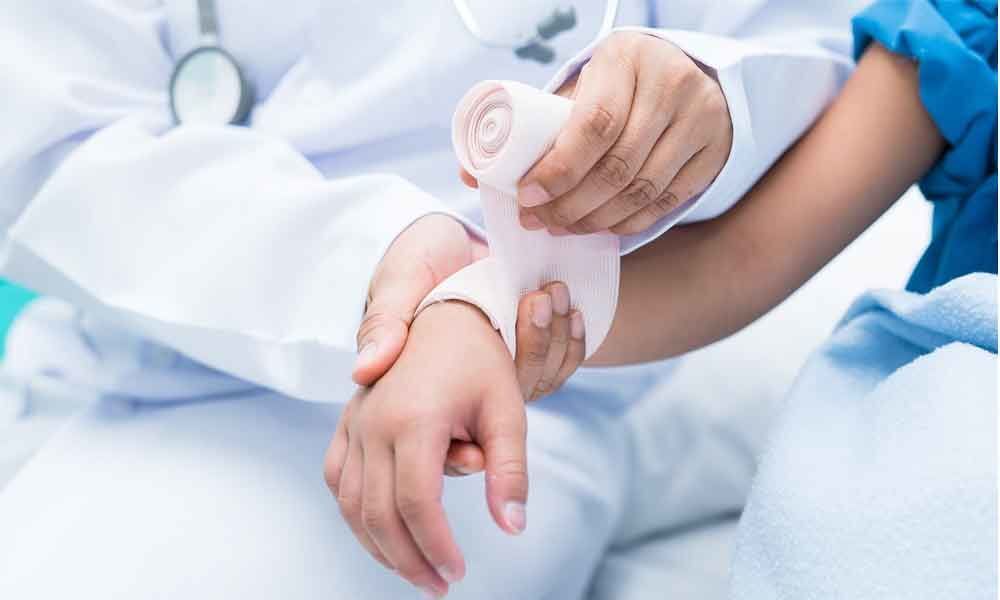Live
- HC extends Sengar’s interim bail till Jan 20
- Foundation stone laid for drinking water pipeline
- Hyderabad: Fake tea powder unit busted, stocks worth Rs 1.2L seized
- Mastermind of kidnapping gang targeting celebrities arrested
- Khanapur: Temples celebrate their anniversaries grandly
- Ensure 100% enrolment of women into SHGs, urges Collector
- Resolve Prajavani petitions quickly: DC Venkatesh Dotre
- Record govt jobs provided in one and a half years says Narendra Modi
- Women SHG members trained in handicrafts, manufacturing
- TGCSB nabs 21 cyber criminals
Just In
Teens hitting puberty late may lead to weaker bones


Studies reveal that late puberty may be the cause of weak bones at later age.
Washington: In the study, which included more than 6,000 British children, researchers found that kids who experienced their growth spurts - which occur around the age of puberty - late had lower than average bone density in young adulthood.
"Teens who mature later than their peers tend to have a lower bone density on average as they grow and so they are likely to have a risk of breaking a bone," said the study's lead author Ahmed Elhakeem, an epidemiologist at the University of Bristol. "These later maturing teens did catch up to some degree with early maturing teens in terms of bone strength, but they continued to have lower bone strength after they finished growing and became adults, so they may also be at increased risk for osteoporosis in later life."
Finding which teens might be at risk of lower bone density is important because "peak bone mass at the end of growth is thought to be an important determinant of the later-life risk of fracture and osteoporosis," Elhakeem and his colleagues note in JAMA Network Open. "For example, bone remodelling simulations showed that a 10 per cent increase in bone mineral density would delay osteoporosis by 13 years."
To take a closer look at how the timing of kids' growth spurts might impact their eventual bone density, the researchers turned to the Avon Longitudinal Study of Parents and Children (ALSPAC), a study that recruited all pregnant women who were residing in the area served by three National Health Service authorities in southwest England who were expected to give birth between April 1991 and December 1992.
The researchers focused on 6,389 of the babies born during that period who had their height measured between the ages of 5 and 20, with at least one measurement made after age 9. All of the children had been invited to have their bone density measured as part at ages 10, 12, 14, 16 18 and 25.
To determine whether growth spurt age was correlated with bone density, the researchers analyzed bone density measurements while accounting for a host of factors, including birth weight, socioeconomic status, and body mass index (BMI) and early life diet.
Girls had their growth spurts earlier, at an average age of 11.5, while boys spurted on average at age 13.5. Boys gained bone mineral density at faster rates than girls. The greatest gains in bone density occurred between a year prior to the spurt and two years afterwards, the researchers found.
Among both girls and boys, there were faster gains in bone mineral density when the growth spurt came late. But even with speeded up bone density gains, the kids who spurted late never caught up with those who spurted early.
A strength of the new study is that the researchers "had a lot of patients who had (bone density) scans," said Dr Robert Rapaport, a professor of paediatrics at the Icahn School of Medicine and chief of pediatric endocrinology and diabetes at the Mount Sinai Health System.
While the study showed that kids who spurted late may have had less time for bone accumulation, it's not clear what the value of this finding is, said Rapaport, who was not involved in the research. "The more important question, going forward, is how this translates into bone mineral density in adults and older people and whether children with low bone density had increased fracture risk," Rapaport said.
Elhakeem, however, advises that kids who experience their growth spurt late follow recommendations from the Royal Osteoporosis Society, which "can provide advice on the ways people can strengthen their bones. These include a healthy lifestyle and getting plenty of exercises."

© 2024 Hyderabad Media House Limited/The Hans India. All rights reserved. Powered by hocalwire.com






